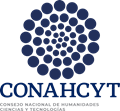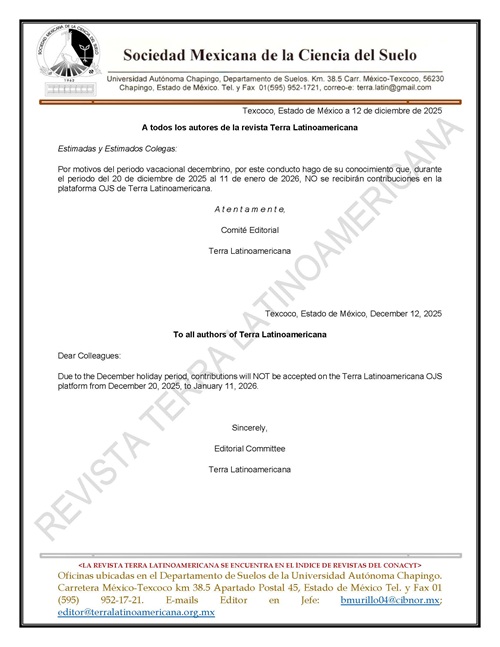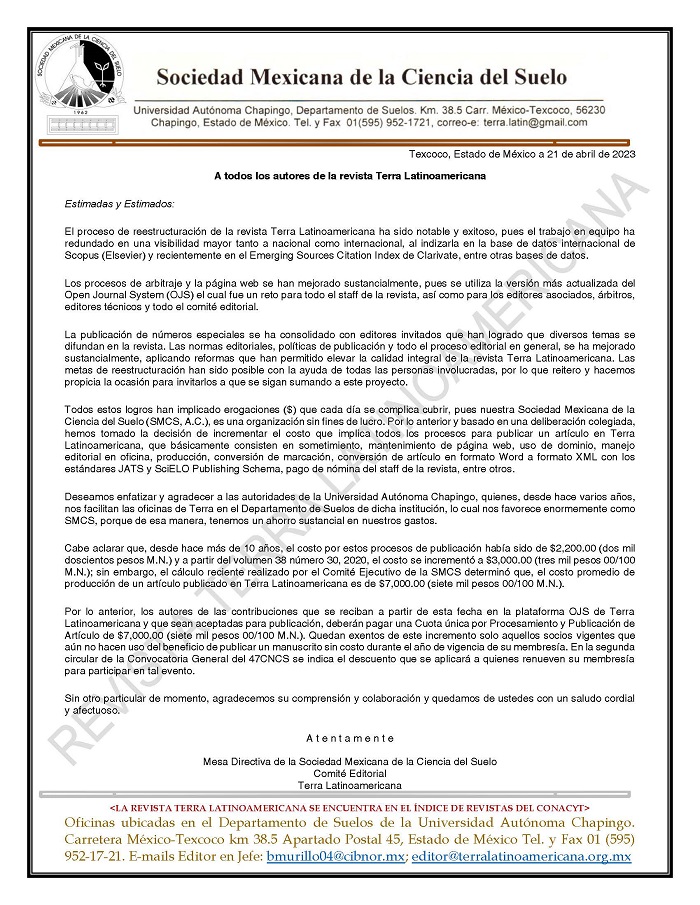Correction of iron chlorosis with chelate EDDHA in crops grown in alkaline and calcareous soil
DOI:
https://doi.org/10.28940/terra.v36i1.254Keywords:
FeSO4, iron def iciency, soybean, sorghum, beans, okraAbstract
Iron deficiency in crops occurs mainly in regions with alkaline and calcareous soils. In the present study the effectiveness of Fe3+ chelated EDDHA [ethylenediamine di-(o-hydroxyphenylacetic acid)] is assessed alone or combined with foliar spray of FeSO4, in crops of sorghum, soybean, okra and beans. EDDHA-Fe (Ultraferro®) was applied at a dose of 1% on the seed at sowing and FeSO4 was applied on foliage twice at 1.5%. In the four experiments, we determined the variables index of chlorophyll (SPAD) in three readings (March 15 and 28, April 6), and 47-50 days after sowing and leaf and root biomass. Between crops, soybeans and okra expressed greater intensity of chlorosis, which was visible among treatments. In both crops, higher SPAD and leaf and root biomass values were obtained with applications of EDDHA-Fe alone or combined with FeSO4. In okra, the SPAD index was higher with the combination EDDHA-Fe + FeSO4, although root and leaf biomass was greater with EDDHA-Fe alone or in combination with FeSO4. In beans and sorghum, chlorosis was less visible. For beans, the highest SPAD rate was recorded with EDDHA-Fe and/or FeSO4 in the two latest readings (March 28 and April 6) and in leaf and root biomass. Similarly, the three chemical treatments exceeded the control. However, in sorghum, the highest SPAD was recorded on the last reading (Apr-6), while there were no significant differences in leaf and root biomass. There were no observed additive effects on the variables with the combination EDDHA-Fe and FeSO4. In general, the results indicate that application of EDDHA-Fe alone or combined with foliar FeSO4 in soybean, okra and bean, effectively corrected chlorosis ferric.Downloads
Publication Facts
Reviewer profiles N/A
Author statements
- Academic society
- Terra Latinoamericana
- Publisher
- Mexican Society of Soil Science, C.A.

















